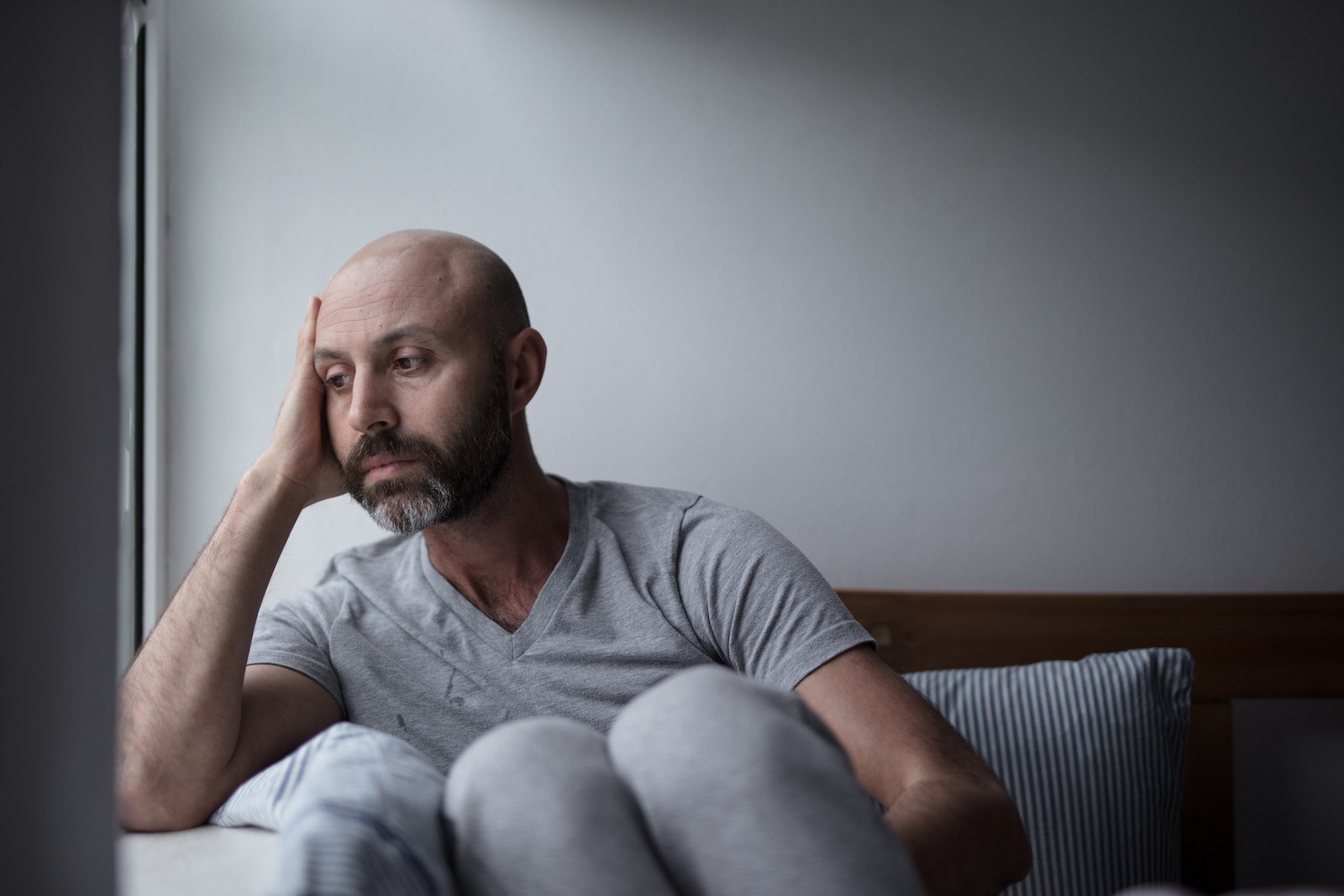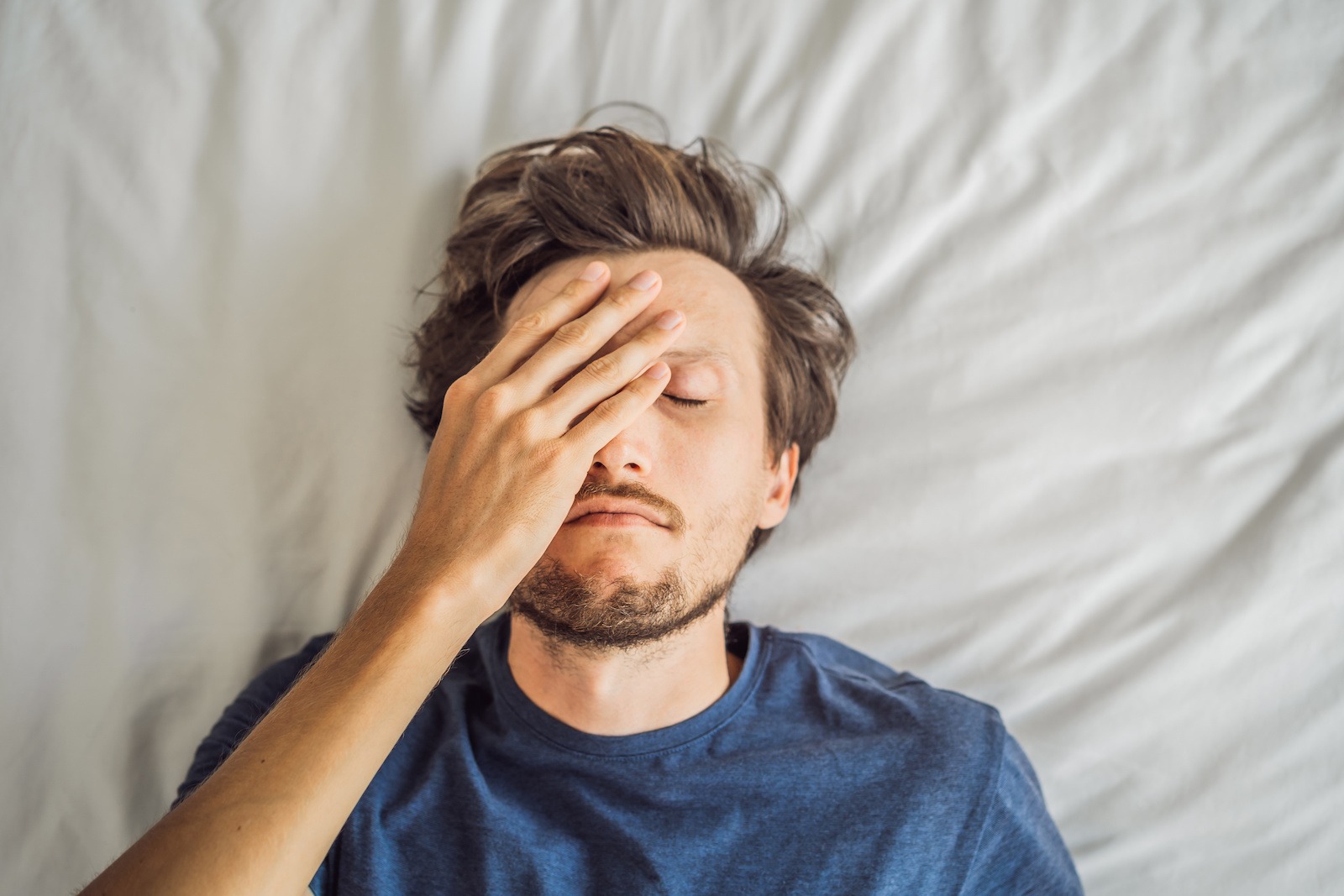Withdrawal | 5 min read
Opioid Withdrawal Symptoms and Timeline
Medically Reviewed By

On August 28, 2024
Written By
On December 22, 2021

What you will learn
- Opioids are prescribed to treat moderate to severe pain, but they’re also abused.
- Opioids lead to dependence quickly, which can cause intense withdrawal symptoms if you stop taking them suddenly.
- Opioid withdrawal can be painful and severe, possibly even life-threatening.
- Treatment for opioid withdrawal may include medical detox and addiction treatment.
Opioids are a class of drugs that are prescribed to treat pain and a common drug of abuse. Unlike opiates, which are derived from the opium poppy like morphine and codeine, opioids are semi-synthetic or synthetic versions like hydrocodone, oxycodone, and methadone.
Whether prescription or illicit, opioids have a high risk of abuse and addiction. The intense euphoria they cause encourages repeated abuse, eventually leading to dependence and withdrawal, which is extremely difficult to overcome.
What Are Opioids?
Opioids are a class of drugs that include synthetic opioids like fentanyl and pain relievers available legally with a prescription, like Vicodin.[1] Natural opiates like morphine and codeine may also be referred to as opioids. Synthetic and semi-synthetic opioids are synthesized in a lab to mimic the effects of natural opioids. However, they are generally much stronger and more potent than natural opiates.
Prescription opioids are used to treat acute and chronic pain associated with injuries, surgeries, cancer treatment, and palliative care. They relieve the pain by reducing pain perception rather than reducing inflammation or calming the nerves like other pain-relieving medications.
How Do Opioids Affect the Brain?
Opioids have both short- and long-term effects on the brain. The short-term effects may include:[2]
- Pain relief: Opioids attach to opioid receptors in nerve cells in the brain and other parts of the body. This action blocks pain messages sent to the body from the brain, reducing pain perception.
- Euphoria: Opioids affect the brain’s reward circuit, producing a feeling of euphoria. This floods the brain with dopamine, a chemical that produces pleasure and encourages continued opioid use.
- Suppressed breathing: Opioids suppress the parts of the brain that control breathing rate, causing breathing to become slow and shallow. Extremely depressed breathing can reduce oxygen to the brain, leading to permanent brain changes, coma, or death.
- Poor reasoning and awareness: Opioids reduce reasoning and awareness, which can cause you to make poor decisions in dangerous situations or be unaware of your depressed breathing rate and the need to seek medical attention.
Chronic opioid use also causes long-term effects, including:[3]
- Behavioral changes: With regular use, opioids can affect your behavior and affect your decision-making.
- Dependence: Repeated use of opioids builds dependence, which is when your body becomes used to the presence of the substance. If you stop, withdrawal can occur.
- Addiction: An opioid use disorder, or opioid addiction, is an uncontrollable desire to continue to use opioids despite negative effects on your life or your health.
Commonly Prescribed Opioids
The most common prescription opioids include:[4]
- Hydrocodone: A semi-synthetic opioid used to treat moderate to severe pain, often combined with acetaminophen or ibuprofen in prescription medications. It’s commonly prescribed for pain relief and cough suppression.
- Oxycodone: Another semi-synthetic opioid that is used for managing moderate to severe pain. It can be found in both immediate-release and extended-release formulations, making it versatile for different types of pain management.
- Oxymorphone: A potent semi-synthetic opioid used to relieve severe pain, typically in its extended-release form. It is stronger than both oxycodone and hydrocodone and is used for more intense pain management needs.
- Morphine: A natural opiate derived from the opium poppy, widely used to treat severe pain. It’s known for its effectiveness and is available in various forms, including oral, injectable, and extended-release.
- Codeine: A natural opiate that is less potent than morphine and is often used to treat mild to moderate pain and cough. It is commonly combined with acetaminophen or other medications in prescription cough syrups and pain relievers.
- Fentanyl: A synthetic opioid that is extremely potent and used for managing severe pain, particularly in cancer patients or those undergoing major surgery. It is available in various forms, including patches, lozenges, and injectable solutions.
Opioid Withdrawal Symptoms
The symptoms of opioid withdrawal can vary by several factors, including the dosage you take and how often you use opioids. The symptoms may include:[5]
- Diarrhea
- Nausea and vomiting
- Insomnia
- Anxiety
- Elevated body temperature
- Muscle and bone pain
- Chills
- Sweating
- Fast heart rate
- High blood pressure
What Causes Opioid Withdrawal?
When you’ve been using opioids regularly, your body builds up dependence. This means it’s become used to the presence of opioids and needs them to function normally. If you stop suddenly or dramatically reduce your dose, withdrawal occurs.
Opioids affect the brain’s neurotransmitter systems, particularly those involving endorphins and dopamine. With regular use, the brain’s natural production of these chemicals is altered, and the body becomes dependent on opioids to maintain this function. When you remove them, the brain’s chemistry is disrupted.
Opioids also cause physical dependence. When you stop, the body reacts negatively as it attempts to return to its natural state without the drug, leading to withdrawal symptoms. As a depressant, opioids affect the central nervous system and can cause a rebound effect when they’re stopped. The nervous system becomes overactive, leading to symptoms like insomnia and anxiety.
Opioid Withdrawal Timeline
Some types of opioids cause a faster onset of withdrawal than others, while some have long-lasting symptoms. Opioid withdrawal and timeline can vary by the opioid taken, the severity of symptoms, the dose, the time between doses, and the duration of opioid use.
Short-acting opioids like heroin cause withdrawal symptoms to begin about eight to 12 hours after the last dose.[6] They peak within a few days and may last up to a week. Some other short-acting opioids, such as morphine and immediate-release formulations of prescription opioids, may lead to withdrawal symptoms that occur within the first eight to 24 hours after the last dose. They may last up to 10 days.
Long-acting opioids, such as extended-release formulations of prescription opioids and methadone, can start withdrawal symptoms up to 48 hours after the last dose.[7] The withdrawal period may last up to two weeks.
Opioids can have post-acute withdrawal syndrome (PAWS), which is a prolonged withdrawal period with intense psychological symptoms that are similar to depressive, anxiety, or mood disorders. The symptoms can vary and may come and go, but they usually include:
- Anxiety or panic
- Irritability
- Depression
- Intense cravings
- Sleep disturbances
- Difficulty with learning
- Apathy
- Low-stress tolerance
Can Opioid Withdrawal Be Fatal?
Opioid withdrawal doesn’t have a reputation for being fatal like alcohol or benzo withdrawal, but it can have complications that are rarely life-threatening. Often, complications arise from the extreme persistent vomiting and diarrhea that are common with opioid withdrawal, leading to dehydration, elevated blood sodium, and possible heart failure.[8]
Because of this, you should never try to stop taking opioids on your own. It’s crucial to have medical supervision to monitor your health and prevent these complications from occurring.
Opioid Detox and Withdrawal Treatment
Opioid withdrawal can be intense, uncomfortable, and possibly dangerous. Medical detox can provide a safe, medically monitored environment to reduce the severity of withdrawal symptoms and keep you as safe and comfortable as possible.
Depending on the withdrawal syndrome for the specific opioid, medical detoxification may take a week or longer until the drug clears your system and withdrawal symptoms subside. It’s not only important for your health and safety but reduces the risk of relapse to relieve the pain.
Opioids are extremely addictive, so detox isn’t enough to overcome opioid use disorder on its own. It’s best to transition into an inpatient or outpatient addiction treatment program after detox to address the social, emotional, and psychological aspects of addiction.
Substance use disorder treatment is individualized but may include individual therapy, group therapy, support groups, and behavioral therapies like cognitive behavioral therapy (CBT) and motivational interviewing. Opioids often benefit from medication-assisted treatment (MAT), which uses medications like methadone, suboxone, or buprenorphine to manage opioid cravings and withdrawal symptoms while reducing the risk of relapse.
Get Help for Opioid Addiction and Withdrawal
Opioid addiction is difficult to overcome on your own, and it can begin with the legal use of prescription opioid medications. If you or a loved one is struggling with opioid addiction, it’s best to start an addiction treatment program to manage withdrawal and get on a healthier path.
Frequently Asked Questions About Opioid Withdrawal
Opioid withdrawal can be painful and difficult. In some cases, complications may be dangerous. Medical detox is the best choice to get medical supervision and care to manage the symptoms.
No, it’s not recommended to try to quit opioids on your own. Opioid withdrawal can be extremely uncomfortable and may have complications that you can’t address outside of a medical environment. There’s also a high risk of relapse from the intensity of the withdrawal symptoms.
Stopping opioids can cause withdrawal even if you’re not addicted. These drugs are potent and lead to dependence quickly. If you take opioids for more than a week, speak to your doctor about how to stop these drugs safely.
Ascendant New York Editorial Guidelines
Here at Ascendant New York, we understand the importance of having access to accurate medical information you can trust, especially when you or a loved one is suffering from addiction. Find out more on our policy.
[1] Opioid use disorder. Psychiatry.org – Opioid Use Disorder. (n.d.). Retrieved from https://www.psychiatry.org/patients-families/opioid-use-disorder on 2024, July 24.
[2,3] MediLexicon International. (n.d.-b). How do opioids affect the brain?. Medical News Today. Retrieved from https://www.medicalnewstoday.com/articles/opioid-effects-on-the-brain#opioid-use-disorder-treatment on 2024, July 24.
[4] What medications are opioids?. Drugs.com. (n.d.-f). Retrieved from https://www.drugs.com/medical-answers/medications-opioids-3558446/ on 2024, July 24.
[5] Opioid use disorder. Psychiatry.org – Opioid Use Disorder. (n.d.). Retrieved from https://www.psychiatry.org/patients-families/opioid-use-disorder on 2024, July 24.
[6,7] U.S. National Library of Medicine. (1970, January 1). Withdrawal management. Clinical Guidelines for Withdrawal Management and Treatment of Drug Dependence in Closed Settings. Retrieved from https://www.ncbi.nlm.nih.gov/books/NBK310652/ on 2024, July 24.
[8] S. D. (n.d.). Yes, people can die from Opiate withdrawal. NDARC. Retrieved from https://ndarc.med.unsw.edu.au/blog/yes-people-can-die-opiate-withdrawal on 2024, July 24





